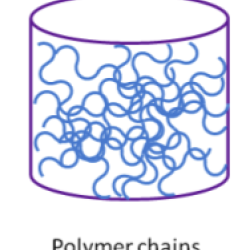Source Institutions
Source Institutions
Add to list Go to activity
Activity link broken? See if it's at the internet archive

In this activity, learners make a paper model of a polymer, then make Silly Putty, an actual polymer. For the model, learners make chains of paper dolls and color them in different ways to represent different types of monomers. The doll stencil is not included, but can be improvised. Shaking the chains in a bag simulates making the polymer. For the Silly Putty, learners mix saturated borax with Elmer's glue. There are two versions of this activity, one written for grades K-2, one for 3-6, with the older version including some additional materials testing, and some variation in the Silly Putty mixture.
- 5 to 10 minutes
- 10 to 30 minutes
- $1 - $5 per student
- Ages 4 - 14
- Activity, Experiment/Lab Activity, Model
- English
Quick Guide
Materials List (per student)
- 2 plastic cups
- 1 bottle of saturated borax solution
- 1 pair of scissors
- 1 bottle of Elmer's glue
- 1 scotch tape
- 1 plastic pipette
- 1 plastic stirrer
- 1 plastic shopping bag
- 1 boy stencil (MISSING)
- 1 girl stencil (MISSING)
- 4 pieces of large white paper (3-6)
- 2 squares of black plastic bag (3-6)
- 2 squares of brown paper bag (3-6)
- 1 piece of rubber band (Cut) (3-6)
- 1 1/2 Tbs (3-6)
- pencil (3-6)
Subjects
-
Physical Sciences
- Chemistry
-
States of Matter
- Solids
- Structure and Properties of Matter
-
The Nature of Science
-
The Scientific Process
- Conducting Investigations
- Gathering Data
-
The Scientific Process
Informal Categories
- Arts and Crafts
- Toys
Other
Components that are part of this resource:
This resource is part of:
Access Rights:
- Free access
By:
- Shaw, Maisie ; Gomez, Maria
Rights:
- All rights reserved, Passport to Chemistry Adventure Program, Mount Holyoke College, 2009
Funding Source:
- Camille and Henry Dreyfus Foundation, Inc.
